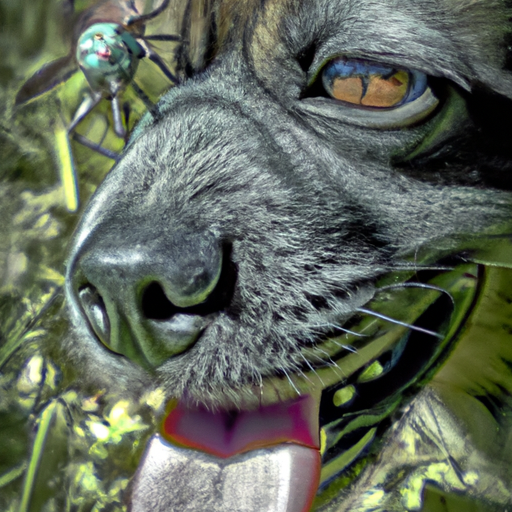As a dedicated and loving caregiver to your furry friend, you may have come across the term ‘botfly’ and wondered what it means. It’s a topic that may not be top of mind, until you find yourself in an unfortunate situation where your canine companion is affected.
Understanding Botflies
Botflies, known scientifically as Dermatobia hominis, are a type of parasitic fly that’s common in Central and South America. They lay their eggs on mosquitoes, ticks, or other flies. When these insects bite a mammal like a dog, the heat from the mammal’s body causes the eggs to hatch into larvae. These larvae then burrow into the skin, causing a condition known as myiasis.
The Life Cycle of a Botfly
The life cycle of a botfly is quite fascinating, albeit somewhat disturbing:
- Egg Stage: The botfly lays its eggs on a carrier insect.
- Larval Stage: The eggs hatch into larvae when exposed to the body heat of a mammal.
- Pupal Stage: After burrowing into the skin of the mammal and feeding, the larvae drop out to pupate in the soil.
- Adult Stage: After about 3 weeks, the adult botfly emerges from the pupa.
Symptoms of a Botfly Infestation in Dogs
As a caregiver, it’s important to keep a keen eye on your dog’s behavior and any physical changes. If your dog has been infested by botflies, they may exhibit the following symptoms:
- A red, inflamed lump on the skin
- Discomfort or pain
- Lethargy or loss of appetite
- Fever
Treating a Botfly Infestation
If you suspect that your dog has a botfly infestation, it’s imperative to seek veterinary care immediately. Removing the larvae incorrectly can lead to serious complications. Here’s a brief overview of the treatment process:
- The area around the larva is sterilized.
- A local anesthetic is applied.
- The larva is carefully extracted with a pair of tweezers.
- The wound is cleaned and an antibiotic is applied.
Preventing Future Infestations
Preventing botfly infestations can be challenging, especially if you live in an area where botflies are common. However, here are some steps you can take to protect your furry friend:
- Regularly apply flea and tick preventative treatments.
- Keep your dog away from known botfly habitats.
- Regularly check your dog for any signs of infestation.
| Prevention Method | Details |
|---|---|
| Flea and Tick Preventatives | Applied monthly |
| Avoiding Botfly Habitats | Primarily in wooded and grassy areas |
| Regular Checks | Look for lumps and changes in behavior |
Frequently Asked Questions
Q: Are botflies common in the United States?
A: Botflies are not common in the United States. They are usually found in Central and South America.
Q: Can humans get botflies?
A: Yes, humans can also be infested by botflies, although it’s relatively rare.
Q: What other animals can get botflies?
A: A wide range of mammals can get botflies, including cats, horses, and cattle.
Q: Are botflies fatal to dogs?
A: While botfly infestations can cause discomfort and illness, they are rarely fatal if treated promptly.
Q: Can I remove a botfly larva myself?
A: It’s not recommended to remove a botfly larva yourself, as improper removal can lead to serious complications.



